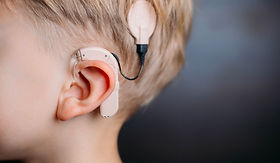Doesn’t insurance cover hearing devices?
NO!
Hearing devices are classified as “cosmetic” or “non-essential.”

Despite hearing being essential to a child’s development, communication, and education, hearing aids are often classified by insurance companies as “cosmetic” or “non-essential.” This outdated and harmful designation means that most families are left to shoulder the full cost—often thousands of dollars per pair—out of pocket.
The result? Too many children go without the hearing support they desperately need simply because their families can’t afford it. This isn’t a luxury—it’s a necessity.
The average cost of a hearing aid can range from around $6,000 to as high as $30,000 per pair.
Every year, around 6,000 children are born with hearing disabilities.
40% of children with hearing loss never receive the specialized care they need.
When Hearing Isn’t Covered, We Step In!
Our mission is to provide hearing devices for as many families with Deaf/Hard of Hearing children as possible by supplying them with the funds needed to receive hearing and hearing assisted devices. Raising both funds and awareness on the lack of financial support given by insurance companies and government agencies for life changing devices needed to allow deaf children to hear.

Did you Know?
Why Child Hearing Aids Are Out of Reach for So Many Families

Behind-Ear Hearing Aid
$1,000 to $5,000
A Behind-the-Ear (BTE) hearing aid is one of the most common types of hearing aids. It sits behind the ear, with a tube or wire that connects to an earmold or dome placed inside the ear canal.

BAHA
$3,500 to $12,000
The BAHA (Bone Anchored Hearing Aid) is a type of hearing device designed for people with conductive hearing loss, mixed hearing loss, or single-sided deafness. Instead of sending sound through the ear canal, it works by transmitting sound vibrations through the skull bone directly to the inner ear (cochlea).

Coclear Implant
$50,000 to $100,000
A Cochlear Implant is a surgically implanted electronic device designed to provide a sense of sound to individuals with severe to profound sensorineural hearing loss, especially when hearing aids no longer help.



